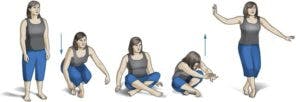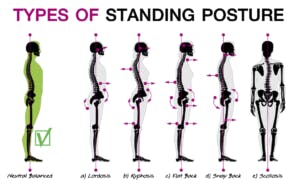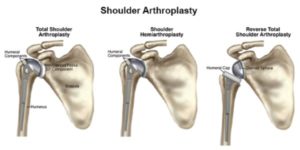A mild to moderate bout with COVID-19 can leave you feeling weak, with a loss of balance and coordination, a lack of endurance, and sometimes problems with memory. Physical activity can help you recover.
Exercise may be the last thing on your mind, but it is key to regaining your fitness. Regular physical activity benefits your physical, mental, and social health. It’s important for COVID-19 survivors (after their initial recovery) to get moving. Physical activity helps to improve:
- Strength.
- Endurance.
- Breathing capacity.
According to an article in BMJ, it’s important to return to exercise after at least seven days free of COVID-19 symptoms and to begin with at least two weeks of minimal exertion.
Listen to your body (and your doctor or physical therapist) for when it’s safe to return to exercise. Then, take things slowly and follow this advice for returning to physical activity after a typical case of COVID-19.
1. Just Move, Even a Little
Your body has been through a lot. Take things slowly. For some, a trip from the bed or couch to the bathroom may be as much as you can handle in the early days. A flight of stairs may make you want to plop on the nearest easy chair. Get up and move as many times throughout the day as you can, even if it’s just to stand from sitting several times in a row. Stretch for the sky with both arms and take several deep breaths each time you rise. Doing this light movement several times a day will help you start to build back strength.
2. Take a Walk
If a little movement is not too challenging, try taking a brief walk. Begin at first by walking down the hall several times or around your house or apartment building. If that feels good, try a five-, 10-, or 15-minute walk around your neighborhood.
At this stage in your recovery, your intensity should be very light to light. At a light intensity, you should be able to easily carry on a conversation. If your intensity causes you to gasp for breath, you are pushing yourself too hard. The CDC provides a helpful description of Borg’s Rating of Perceived Exertion to help you measure your intensity.
If you’re a regular fitness fanatic and light intensity sounds too easy, be careful not to overdo it. It is important to allow your body time to get back to doing activities at your pre-COVID-19 pace. Gradually increase the intensity and length of your walks. With each day and each week, you’ll be preparing your body to return to the full demands of a vigorous workout.
3. Ready To Run
If you tolerate walking, you may be ready to begin jogging, swimming, biking, or other activities. First, start your chosen activity at a slow pace for 10 minutes. Then, increase your pace for one minute before returning to the slower pace for another five to 10 minutes. Then repeat. When you’re able to do these intervals for 30 minutes or more, you’re ready to progress. Safely ease back into physical activity by slowly increasing the amount of intense exercise each day or week.
At this phase of recovery, you may be ready for a higher intensity level. Aim for moderate-intensity in which the exercise is somewhat hard, but not too hard. You should be breathing faster and deeper, but still be able to speak a full sentence and not be gasping for breath.
Everyone, regardless of age, condition, or ability should try to get the amount of daily physical activity recommended by the Department of Health and Human Services. If you are struggling with lingering side effects from COVID-19 and have trouble doing physical activities, contact your doctor. They can refer you to us and we can work with you to help you reach your goals.
Disclaimer: The above tips are designed to help people return to fitness after a typical case of COVID-19. Around 10% of people infected with COVID-19 will have problems that linger for months after the infection is gone. These individuals are called long-haulers, and the condition is known as “long-COVID-19” or PASC, which stands for Post-Acute Sequelae of SARS-CoV-2. If you have symptoms of long-COVID, contact your primary care doctor before starting an exercise program. Long-COVID could involve other health complications that require labs, tests, or imaging, before being referred to a physical therapist who will design an exercise treatment plan specific to your condition.
_______________________
for more on physical therapy for COVID visit:







